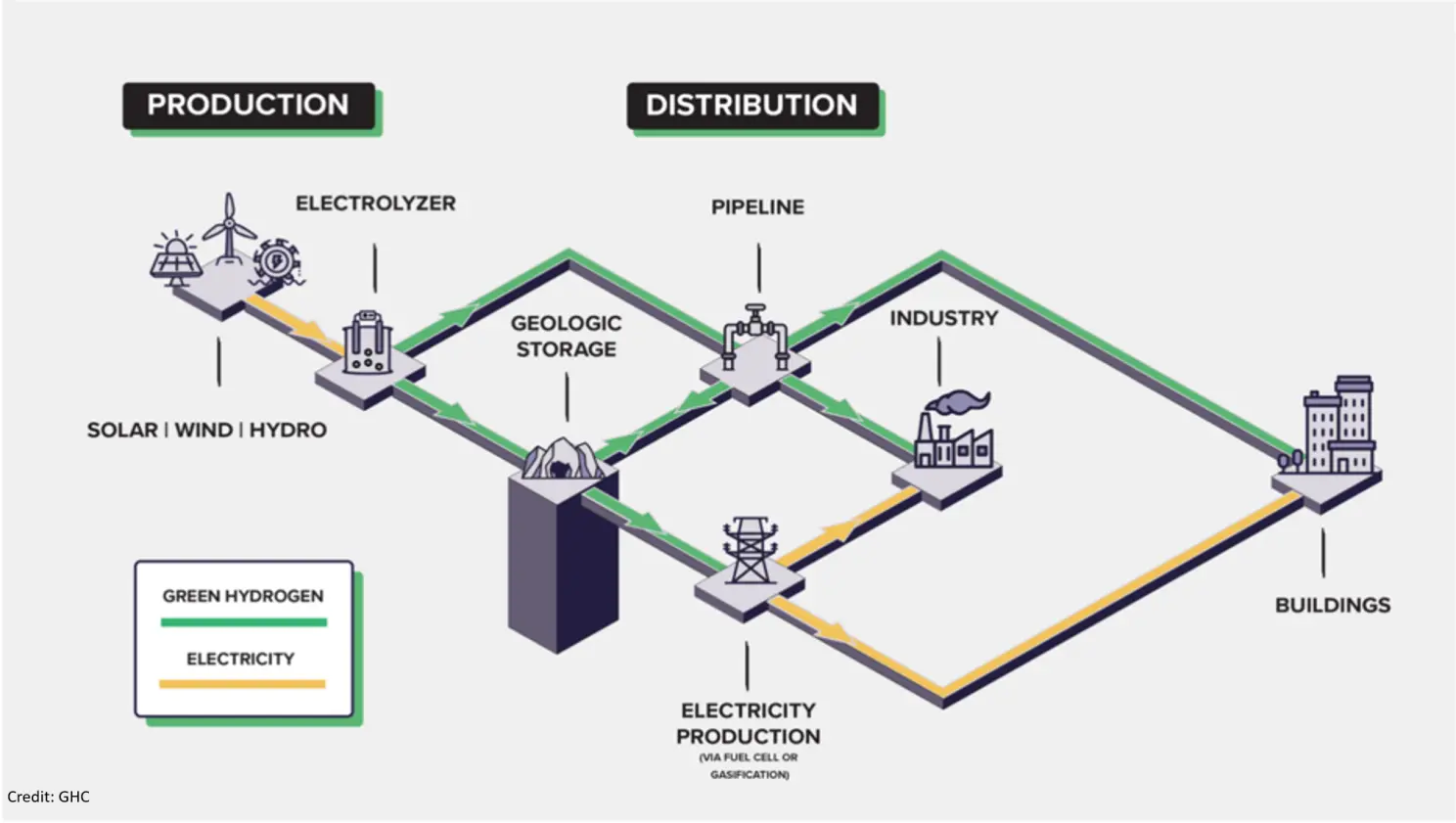Technology
Transforming the industry.
Feb 2, 2022

This seesawing has led critics to claim that hydrogen is one of those futuristic technologies that is “just a few years in the future – and always will be.” Now, in its third resurgence – it’s not just hype, it’s real.
My own (and others’) conviction is not based on the hydrogen-fueled vs. battery-electric vehicles debate, however. Rather, it’s grounded in our solar power perspective, where we see green hydrogen as a key tool for driving progress toward a 100% renewable electric grid. A fully-renewable grid must be able to store substantial amounts of energy for long periods of time. Green hydrogen can be used as a carbon-free fuel that can store energy at very low cost almost indefinitely. It can also be transported over long distances and burned in power plants to produce carbon-free power.
However, deploying green hydrogen will require significant investments in technology and infrastructure to bring today’s relatively high costs down. These investments are interdependent: the attractiveness of each depends on the others. This is a time when leadership and coordination will be important. Industry and investors are keen to act and working to develop their visions, and policymakers can help accelerate progress by moving aggressively to adopt policies to drive early demand for green hydrogen, stimulating investment, increasing volumes and driving down costs. With the appropriate policies and incentives in place, we expect that green hydrogen can reach cost parity with fossil fuels (for energy storage and transportation) and with fossil-derived hydrogen (as an industrial gas).
In this piece, I will first touch on the current green hydrogen landscape and potential applications. Then stay tuned for a second piece, in which I’ll delve into how this “sun gas” can enable the clean energy transition through improving our long-duration storage capabilities.
Current production and applications of hydrogen
As you may know, there is already a hydrogen economy today: hydrogen is an important industrial chemical, with about 70 million tonnes consumed annually. The biggest single use is in the production of ammonia for fertilizer, but hydrogen is used in a variety of other applications – including (perhaps ironically) in refining hydrocarbons.
Almost all hydrogen used today is produced by separating hydrogen from natural gas. Unfortunately, this process produces massive quantities of CO2 as a byproduct – about 12 tonnes of it for every tonne of hydrogen produced, or a total of 830 million tonnes of CO2 a year – an amount equivalent to the combined CO2 output of both the United Kingdom and Indonesia[1] or about 2% of total global emissions[2].
Transitioning the existing hydrogen economy to green hydrogen would provide meaningful and important CO2 emissions reductions. Green hydrogen is produced using water, renewable electricity, and the century-old technology of electrolysis – with nary a carbon atom in sight.

The promise of green hydrogen
There are many proposed applications for green hydrogen – some of which futurists and skeptics still argue about regarding feasibility and timing. They include transportation fuel (either as hydrogen or as ammonia in shipping, trains, land vehicles and perhaps even aircraft); industrial and building heating and power; steelmaking, creation of synthetic liquid fuels from carbon dioxide; and long-term energy storage.
The option that critics and optimists alike can most often agree on is long-term energy storage. Energy storage is likely to be one of the important large-scale new uses of green hydrogen – and a central component of the future all-electric grid. Green hydrogen can be used to store the power of solar (or other renewables) and very large amounts of hydrogen can be stored in subterranean caverns at low cost.
Utilities are already counting on this. For example, the Intermountain Power Project (IPP) in Utah is developing a hydrogen energy storage project that will utilize renewable generation to produce green hydrogen through electrolysis and, in turn, replace a retiring coal plant. The hydrogen will be stored in caverns in nearby subterranean salt deposits, allowing the project to draw on the hydrogen to generate electricity through essentially conventional combined-cycle gas turbines when needed. A single salt cavern could hold enough hydrogen to fuel the project’s 840 MW turbines for a full week; and the salt deposits can hold many caverns. The new plant will initially run on a mix of natural gas and green hydrogen but will transition over time to an all-green-hydrogen plant. The largest customer of the IPP is the Los Angeles Department of Water and Power (LADWP), a leader in the transition to green electricity. LADWP may also convert other gas-fired power plants to green hydrogen fuel, enabling them to continue to serve as “peaker” plants, called on when there is high demand for power or to handle disruptions in other parts of the grid.
What's next?
While green hydrogen’s potential applications are endless, we are especially interested in its use as an energy storage medium. This can ultimately change our energy future as we know it.
How exactly can we deploy and enable green hydrogen as long-term energy storage? Well, stay tuned for my next piece that explores how green hydrogen can be the crucial means to achieve a 100% renewable and reliable energy grid.
[1] https://www.iea.org/fuels-and-technologies/hydrogen
[2] https://www.statista.com/statistics/276629/global-co2-emissions/

